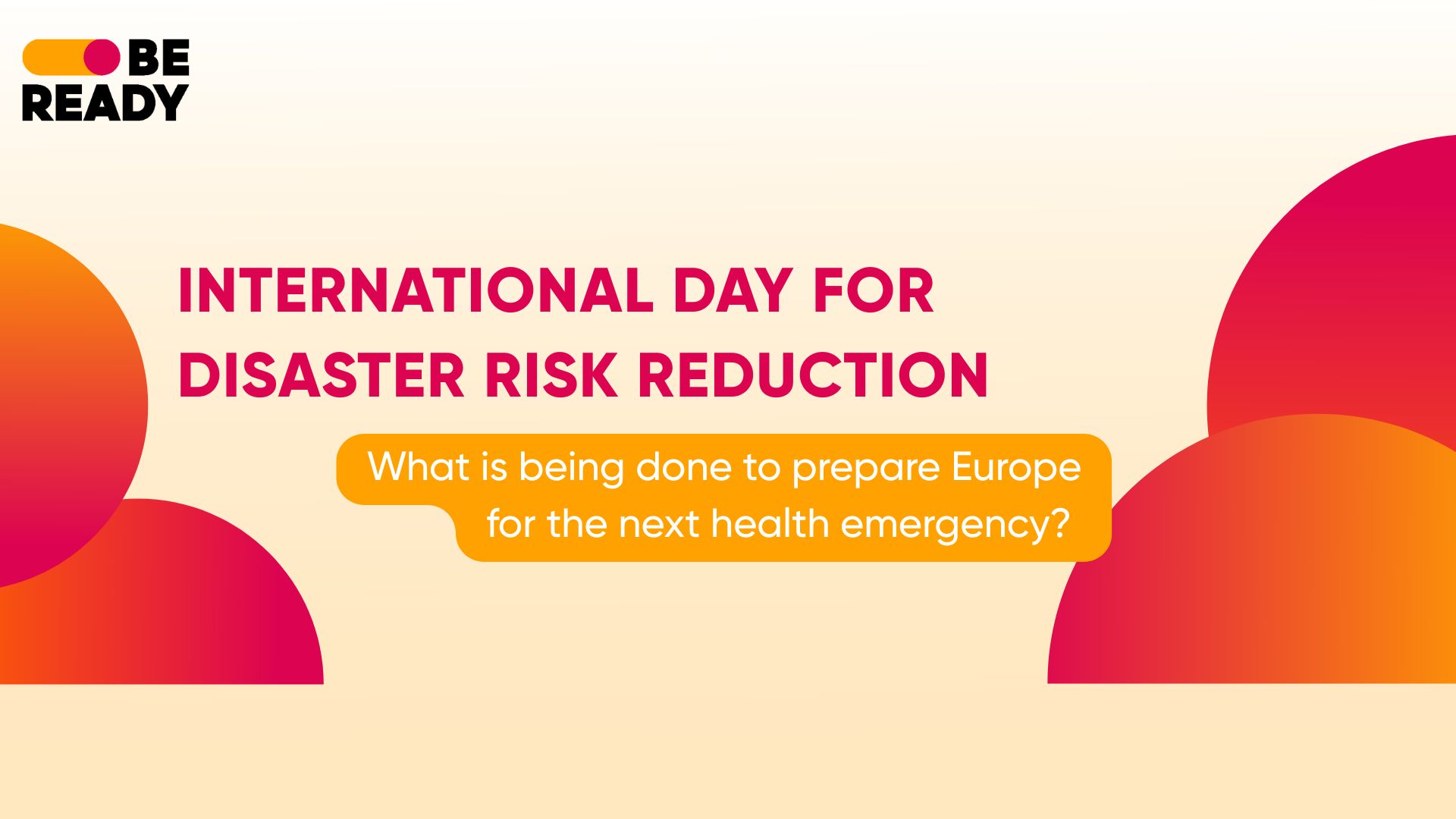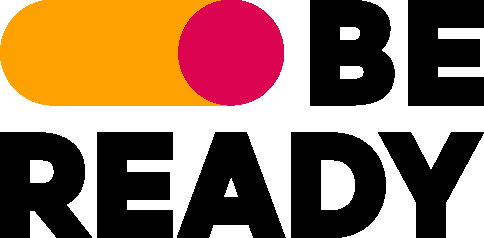What is being done to prepare Europe for the next health emergency?

What is being done to prepare Europe for the next health emergency?
Presenting the partnership’s actions in a Q&A format, based on input from Hervé Raoul, coordinator of BE READY PLUS, ANRS MIE, France
The International Day for Disaster Risk Reduction was established in 1989, following a call by the United Nations General Assembly to promote a global culture of risk awareness and disaster reduction. Each year, on the 13th of October, this day serves as a reminder of the collective responsibility we share in minimizing vulnerabilities and building safer, more resilient communities.
The 2025 theme, “Fund Resilience, Not Disasters,” echoes a powerful message: true security begins with foresight and investment in prevention. Preparedness is the cornerstone of resilience. It provides the knowledge, structures, and systems that empower societies to respond and recover swiftly when challenges arise. On this International Day for Disaster Risk Reduction, we turn the spotlight on Europe’s ongoing efforts to strengthen preparedness. The upcoming European Partnership for Pandemic Preparedness reaffirms its commitment to this mission. Through a special Q&A feature, informed by inputs from the Coordinator Prof. Hervé Raoul, we present how the upcoming European Partnership for Pandemic Preparedness will reinforce Europe’s capacity to anticipate and respond to future health emergencies.
Q1: Since the COVID-19 pandemic, Europe has launched many initiatives to strengthen health preparedness. What concrete steps have been taken to make sure we are better prepared this time?
- Sharing Health Data to Strengthen Europe’s Pandemic Preparedness
Europe is investing in interoperable data platforms and infrastructures, making sure data are Findable, Accessible, Interoperable, and Reusable (FAIR) across borders, so information can be shared and used quickly. The Future Pandemic Preparedness Partnership (BE READY) will develop harmonised FAIR data standards to improve interoperability, ensuring faster, more consistent access to high-quality datasets.
- Clinical Trial Networks for Faster Research Response
We are building clinical trial networks and adaptive platforms that can pivot quickly from one disease to another, ensuring research is never starting from scratch. The Partnership BE READY aims to accelerate the transition from research to action. It will promote the use of common trial protocols and harmonised regulatory frameworks across Member States, thus reducing duplication, streamlining approval processes, leading to a coordinated research response when future pandemics occur.
- Foresight and Scenario Planning
By anticipating different scenarios, we strengthen Europe’s ability to plan ahead and respond faster when the next crisis comes. Τhe partnership BE READY will develop a participatory foresight exercise involving experts and stakeholders from across Europe.
- Collaboration and Coordination Across Europe
We are strengthening collaboration and coordination across Europe to ensure united, efficient action in future health crises. The future Partnership BE READY is built on the principle that inclusive coordination — bringing together governments, development agencies, researchers, and civil society — enhances the capacity to respond to health emergencies.
- Speed and Agility in response
We are building ever-warm networks and simplified processes so Europe can respond faster and more effectively when health emergencies arise. Pre-established collaborations ensure stronger responses when crises occur, since they can be activated in weeks rather than months, maintaining readiness both during crises and in quieter periods between emergencies.
Q2: Preparedness is about being ready for the unexpected. What challenges remain in building Europe’s preparedness?
- Interoperability across sectors
We are connecting sectors and aligning standards so Europe can work as one in the face of future health crises. Greater alignment between sectors is needed linking health, digital, veterinary, and environmental data to develop shared standards for data sharing and interoperability, to ensure effective disaster risk reduction.
- Local and Regional adaptation
We are aligning research and clinical networks to ensure pandemic preparedness adapts to the needs of every region in Europe. As health systems remain under national authority, preparedness strategies must adapt to different contexts, recognising that what works in one region may not be directly applicable elsewhere.
- Engaging Public, Private, and Non-Academic Stakeholders
We are fostering a whole-of-society approach to ensure every voice contributes to Europe’s pandemic preparedness. The Partnership BE READY plans to address this gap through consultations on strategic priorities, drawing on input from its end‑users board, which includes representatives from the private sector and community organisations, ensuring that preparedness strategies reflect a diverse range of perspectives and capacities.
- Continuous Updating of Roadmaps and Plans
We keep our preparedness plans alive, adapting continuously to new science, emerging threats, and lessons learned. The Strategic Research and Innovation Agenda (SRIA) of the future Partnership BE READY will be treated as a living document, regularly reviewed to incorporate evolving risks and integrate insights from previous experiences.
Q3: The future European Partnership on Pandemic Preparedness (BE READY NOW) brings together many actors — across sectors, disciplines, and borders. What makes this approach different from previous efforts, and how does it help avoid the “patchwork” response we saw during COVID?
- Shared Strategic Research & Innovation Agenda (SRIA) for Crisis Scenarios.
We work from a common Strategic Research and Innovation Agenda, developed during the preparatory phase of the Partnership, to align efforts across Europe and avoid duplication in crisis preparedness. The adopted SRIA establishes shared priorities and focuses efforts on rapid response and preparedness for a range of crisis situations.
- One Health Integration & Cross Sector Participation
By uniting health, environmental, and social sciences, we see the whole picture and build stronger pandemic preparedness for all. Such integration ensures that health strategies address not only human health but also animal, environmental, and societal factors, which are all interconnected in preventing and managing health crises.
- Data Infrastructure & Readiness
Connecting data across borders and sectors to ensure Europe can act quickly and decisively in a crisis.
A key component of unified pandemic preparedness is the development of common data platforms that allow information to flow seamlessly between countries and sectors. Clear governance structures and agreed triggers for action — coordinated with EU bodies such as ECDC, HERA, and DG RTD — support faster, more coordinated responses across Europe.
- Capacity Building & Foresight Literacy
Training today for the health challenges of tomorrow and building foresight skills to anticipate and act before crises strike. By fostering a culture of anticipation through simulation exercises, scenario planning, and modelling, Europe can better prepare for future health crises and ensure timely, coordinated action.
- Continuous Monitoring & Updating
Learning from today’s crises to be ready for tomorrow — keeping preparedness plans alive and evolving to maintain effective pandemic preparedness. This ensures that strategies remain up to date, adaptable, and capable of addressing emerging threats across Europe.
- Funding & Incentives
Investing in collaboration and trust — funding Europe’s readiness for health crises before they strike.
The future Partnership BE READY will establish dedicated EU funding calls to support cross-border and cross-sector research and collaboration, enabling rapid mobilization of resources when needed.
- Public Communication & Transparency
Transparency builds trust, keeping citizens informed is central to Europe’s preparedness.
Preparedness depends on trust, and only transparent, credible communication can build and maintain this trust with citizens. Risk communication is an integral part of preparedness planning, ensuring that the public is informed, engaged, and confident in the measures taken to protect health.
Q4: For citizens, preparedness can feel abstract. What activities are currently underway in the future Partnership that you think citizens should know about?
Preparedness isn’t just a plan, it’s a Europe-wide network ensuring faster help, treatments, and clearer guidance when crises strike. Citizens should know that Europe is building networks of hospitals, laboratories, and scientists to improve readiness, so that in the next crisis, help can be delivered faster and more efficiently. Preparedness also means quicker development of vaccines and treatments, and clearer guidance when emergencies occur.
Q5: Can you share a concrete example of a preparedness activity already making a difference?
Europe is building rapid-response research networks and shared data platforms so treatments and vaccines can be tested within weeks of an outbreak. Concrete examples of preparedness in Europe include the creation of EU‑wide clinical trial networks that can activate within weeks of an outbreak. This rapid-response capacity was supported by the European projects BE READY and CoMeCT, which helped centralize research priorities during recent health events, such as the 2024 Mpox outbreak and the 2024–2025 H5N1 outbreak. Alongside these networks, shared data platforms are being developed to enable faster, seamless information exchange between countries and experts, ensuring that research and response actions are coordinated and effective.
Q6: What role do health workers, scientists, and local communities play in making preparedness real and trusted on the ground?
Preparedness comes alive through trained health workers, connected scientists, and engaged communities working together before, during, and after a crisis.I In fact they form the backbone of preparedness.
Q7: What will preparedness look like on the ground, in hospitals, labs, or communities?
Preparedness means faster diagnostics in hospitals, ready-to-use vaccine platforms in labs, and informed, protected communities. On the ground, preparedness will be visible in clear and practical ways. In hospitals, this means faster diagnostics and pre-established emergency protocols. In laboratories, ready-to-use platforms will enable rapid development of vaccines and treatments. In communities, preparedness will be reflected in better information, transparent communication, and protective measures that empower citizens to act quickly and confidently.
Q8: How will citizens notice that Europe is better prepared next time?
Next time a health crisis strikes, citizens will see faster vaccines, clearer guidance, and coordinated action across Europe, which is building a Health Security Framework that integrates research, monitoring, rapid response capabilities, and cross‑Member State coordination, with the Partnership providing the core research and innovation foundation for these efforts.
